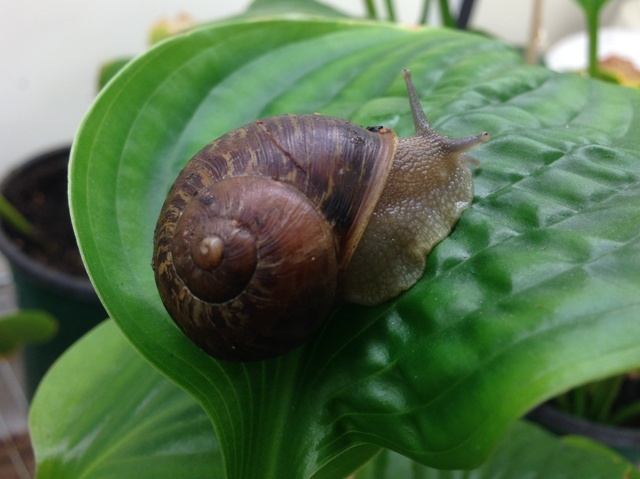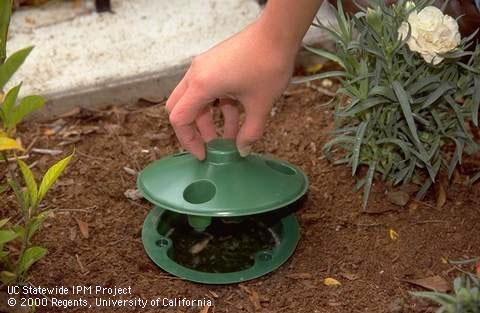Posts Tagged: snails
Non-native snails introduced by French for escargot
Approximately 280 species of snails and slugs are found in California; 242 are thought to be native. The vast majority of the native species are not considered to be pests of nurseries or other production systems.
The most damaging snails and slugs are those that have been accidentally or purposely introduced from areas outside of the US. Most of California's pest gastropods are European species.
Other news:
The Chico News & Review published a profile of local UC ANR Cooperative Extension farm advsior Dani Lightle. Lightle works with Glenn County growers of walnuts, almonds, prunes, olives, pistachios, pecans and fruit. “Basically, if it grows on a tree, it comes my way,” said Lightle, referring to the calls she receives at her Orland office. The article provided background information about UC Cooperative Extension and ANR. "The system's purpose was to be a bridge between public universities and the general public," the article says.
The news website Ensia.com reported on research underway in Northern California on the role of bats in orchard pest control. An intern, under the guidance of UC ANR farm advisor Rachael Long, is comparing orchards with nearby bat boxes with orchards that do not have the convenient dwellings for the flying rodents. "If you increase diversity by relying on insects, bats, raptors, etc., you help strengthen your farming system," Long said.
Snails, slugs and spiders star in new UC IPM videos
Do you have snails and slugs chewing up your favorite garden plants? Are spiders hanging out in and around your home? How can you get rid of those pesky webs?
The UC Statewide IPM program has just released six short videos to help you find answers to these questions. Find the videos on the UC IPM YouTube channel or linked from the specific Pest Notes publications on Snails and Slugs or Spiders.
Snails and slugs chew holes in leaves and fruit of many different types of plants, but they aren’t always present when the damage is discovered. Caterpillars, earwigs, grasshoppers, weevils, and others cause similar damage. How can you identify the culprit? The short video clip “Did a snail eat my plant?” shows damage caused by various pests and can help you identify snail or slug damage by looking for their characteristic slime trails and excrement.
If you do have snails and slugs in the garden and want to control them without using pesticides, learn how to combine trapping with other nonchemical methods for best results in the clip “Trapping snails and slugs.” If you decide to use a pesticide, check out the video on ”How to apply snail and slug bait.” You’ll learn what types of baits are best, which ones to avoid, and how and when to apply them for best results.
Although many people fear them, most spiders you encounter during the day are harmless and can be beneficial in your garden and landscape by eating pest insects. You can see different kinds of spiders in the short clip “Common garden spiders.”
However beneficial they may be, you might not want them inside your home. Even though the easiest method of getting rid of a spider is to kill it, why not trap it and let it loose outdoors to eat those garden pests? “How to catch a spider” shows several ways to easily trap a spider and let it go, including two types of nifty spider catchers that catch spiders in hard-to-reach places. Now what about those sticky webs? “How to clean up spider webs” shows practical methods for removing webs from around your home such as vacuuming, sealing holes in cracks or screens, hosing them off, or using a Webster tool. These methods can also help to keep spiders out of your home.
For more information on snails, slugs, spiders, and other home and garden pests, visit the UC IPM web site.




